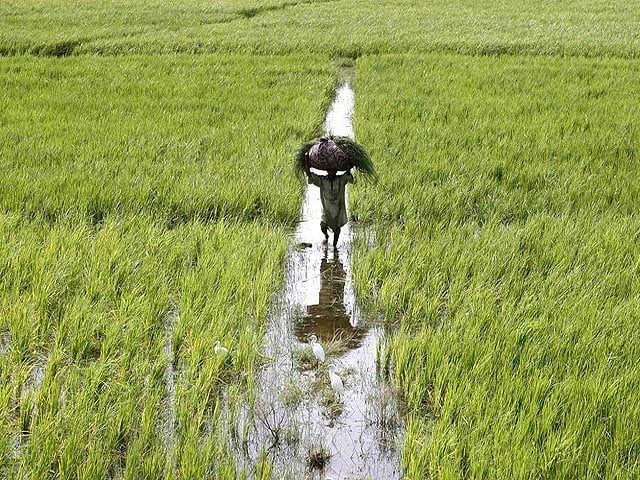$12b flood losses in agriculture sector: report
Study released by the IT centre of the Lahore School of Economics

Pakistan’s economy, which was devastated by impact of the catastrophic floods that hit the country this summer, has managed to avert defaulting by a sliver says the federal government.
The World Bank recently stated that, “Pakistan is still facing the aftermaths of this flood and has suffered a loss of $32 billion in the shape of flood damages.”
Apart from the damage estimates coming in from international lending agencies, local business school think tanks have also shared their own estimates, focusing primarily on agricultural loss.
In a report released by the Innovation and Technology Center of the Lahore School of Economics (LSE), they estimated that the GDP growth of Pakistan over the fiscal year 2022-23 will be 2.38%.
According to the report flood damage to lives, livelihoods and incomes took a devastating toll on the economy over the first quarter (Q1) of the fiscal year, from July to September 2022.
“The projection of GDP growth is comparable to the estimates made by the International Monetary Fund (IMF) in October 2022 which estimated GDP growth of 2% for FY2023. Their model also uniquely estimates a supply shock, positive or negative, which then feeds into a demand shock,” reads the report.
With two caveats, basing the estimations on Q1FY23 and only on income loss, the total impact of the floods on agriculture and non-agriculture estimated by the report is $11.7 billion. The report added that the government faces an enormous output gap minimally estimated here at $12 billion.
Elaborating on the agriculture losses, the report said that a major impact of the floods has been on the Kharif crop.
Cotton, the report stated, has a two-thirds share in Punjab and a third-share in Sindh.
It illustrated that an output loss of 45% of the total cotton crop of 7 million tonnes translated into 3.1 million tonnes lost.
Explaining its method of calculations, the report showed that the share of cotton in the total GDP is 0.6%.
The total GDP of the economy, as given by the IMF for 2021, is $347 billion, which gives the share of the cotton crop in it $2.08 billion. So, the estimated loss in output of 45% of the total value of cotton of $2.08 billion then gives a nominal loss of $0.9 billion.
Similarly, rice has a 55% share in Punjab, a 35% share in Sindh and Balochistan combined, and a 10% share in KP.
The report suggested that an output loss of 31% of the total rice crop of 8.4 million tonnes translates into 2.6 million tonnes lost, taking the estimated loss in the rice crop to $0.75 billion. Sugarcane again has a twothirds share in Punjab, a quarter in Sindh, 8% in KhyberPakhtunkhwa (KP), and under 1% in Balochistan.
An output loss of 7% of the total sugarcane crop of 81 million tonnes translates into a 5.7 million tonne loss, valued at $0.017 billion.
And finally, the reports estimated 0.7 million heads of livestock being lost to the floods, with the loss valued at $0.2 billion.
The report mentioned a loss in minor crops valued at $3.04 billion, giving an aggregate value of loss in agriculture of approximately $5 billion.
The report goes on to predict that the loss in output in agriculture will be equal to the loss in value added in the processing of that output. So, if there has been a 45% loss in output in the cotton crop, this implies that cotton ginning will also have 45% less cotton to add value to, estimating that the reduced cotton output will affect cotton ginning by $0.65 billion.
This will go on to then impact textiles as well, says the report, predicting the loss in textiles to be the highest at $6.2 billion.



















COMMENTS
Comments are moderated and generally will be posted if they are on-topic and not abusive.
For more information, please see our Comments FAQ